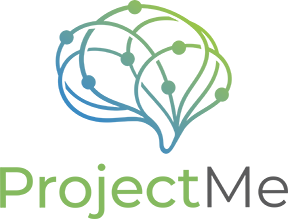
On the 18th of January, Saturday night, we thought TikTok was gone for good, only to see it back up and running on Sunday morning as a result of President Trump's interference.
TikTok's endless scroll of bite-sized, highly engaging videos has taken the world by storm, but it's also sparked some serious conversations about its impact on mental health, especially for individuals with ADHD. With potential bans looming in various parts of the world, this is an ideal time to dig into the phenomenon of "TikTok Brain" and its implications for focus, attention, and overall well-being.
Are we overdiagnosing ADHD, or are we finally catching what's been overlooked for decades? 🧠 Let's explore the impact of awareness.
"TikTok Brain" and ADHD
"TikTok Brain" or as Gen Z humorously likes to call it "TikTok Brainrot" is a term that's popped up to describe the effects of consuming short-form content on attention spans.
Attention-Deficit/Hyperactivity Disorder (ADHD) has always been a topic of discussion within the medical and mental health communities, but in recent years, it seems to be more prevalent than ever before. Whether due to increasing awareness, evolving diagnostic standards, or the stressors of modern life, ADHD is a growing concern that affects people of all ages. Let's explore some of the reasons behind this trend and what this means for individuals seeking to manage their symptoms in today's fast-paced world.
TikTok's algorithm
TikTok's algorithm is designed to deliver hyper-personalized, dopamine-packed content, which can make it difficult to focus on tasks that require sustained mental effort. For individuals with ADHD; a condition already associated with challenges in sustaining attention, this can feel like pouring gasoline on a fire. The "just one more video" mentality often leads to hours of scrolling, delaying important responsibilities. Moreover, each video is different from another, so you might find yourself upset first and then laughing right after which confuses your brain and is not healthy in the long term.
The ban
As I opened Twitter the night that TikTok blacked out, I noticed other people going through the same thing I was going through: TikTok withdrawal. I was instinctively opening and closing and reopening the app despite it being banned without even realizing it.
Unfortunately for those that deleted TikTok off of their phones thinking the ban was permanent, came to regret it on Sunday morning since the app had disappeared from the app store, unavailable for redownload. It only started working again for those that still had it installed. Phones with TikTok still installed went on sale for as much as 50,000 USD.
We saw people on both ends of the spectrum: those who were celebrating the ban as well as those that were calling 911 to cope with the mental breakdown that came with being stripped off their daily dose of serotonin or in some cases, their livelihood. We almost instantly saw folks flocking to RedNote, another Chinese app. The ban could potentially be a silver lining for some of those struggling with ADHD, maladaptive daydreaming, executive dysfunction, etc. caused as a result of doomsday scrolling. We observed a wave of funny and sarcastic videos, like "I was about to go read a book," reflecting how people were celebrating the TikTok ban for supposedly boosting their productivity.
Ultimately, banning a singular app might help folks with ADHD in the short run, however, in the long run they will redirect their bad habits onto other evolving social media platforms. TikTok brain can turn into RedNote brain.
Why ADHD is on the rise
The rise of short-form video content on TikTok, and even Instagram reels, and YouTube shorts, has essentially fried our dopamine receptors. We often see Generation Z make jokes on social media about their attention spans being as low as a goldfish's. The average child's attention span has decreased from 12 to 8 seconds according to a recent Microsoft study. Neglectful parents have caused a boom in 'iPad kids'.
Better awareness and diagnosis
One of the most significant factors behind the increasing prevalence of ADHD is improved awareness and understanding. In the past, many individuals with ADHD were overlooked, their symptoms dismissed as laziness, daydreaming, or "just being a kid." Today, educators, parents, and medical professionals are more likely to recognize the signs, leading to earlier and more accurate diagnoses.
The demands of modern life
Our world has become increasingly fast-paced, with constant demands for multitasking and instant responses. For those with ADHD, this environment can exacerbate symptoms like distractibility, restlessness, and difficulty focusing. Even individuals who might not meet the clinical criteria for ADHD may feel overwhelmed by the pressure, leading to more people seeking evaluations.
The role of technology
The rise of smartphones, social media, and constant connectivity has had a profound impact on our attention spans. While technology itself doesn't cause ADHD, it can heighten symptoms in those who are predisposed. The plethora of notifications and endless streams of information can be particularly challenging for individuals with ADHD, creating a cycle of distraction and stress.
Increased stress levels
Stress is another factor that can worsen ADHD symptoms. The pressures of academic success, career achievement, and maintaining a work-life balance are higher than ever. For those with ADHD, the inability to "keep up" can lead to frustration, burnout, and worsening symptoms.
A broader understanding of ADHD in adults
ADHD is no longer seen as a condition that only affects children. More adults are being diagnosed as awareness of adult ADHD grows. Many of these individuals may have struggled with undiagnosed symptoms for years, only realizing the root of their challenges later in life.
How to navigate ADHD in today's world
Seek professional support
If you suspect that you or a loved one might have ADHD, reaching out to a professional is the first step. A proper diagnosis can open the door to effective treatment options, including therapy, medication, or a combination of both.
Develop healthy routines
Creating structure can help reduce the chaos that ADHD often brings. Set daily routines, use planners, and break tasks into smaller, manageable steps to improve focus and productivity.
Limit technology overload
While it's nearly impossible to disconnect entirely, setting boundaries around technology use can make a big difference. Consider designated screen-free times or using apps that help minimize distractions.
Practice mindfulness and stress management
Mindfulness techniques, such as meditation and deep breathing exercises, can help calm racing thoughts and improve focus. Regular exercise and adequate sleep are also critical in managing ADHD symptoms.
Build a support network
Living with ADHD can feel isolating at times, but connecting with others who understand your experiences can provide encouragement and practical advice. Support groups, therapy, and educational resources are valuable tools.
Here is what our Clinic Director, Nisim Estrada, had to say:
"How we react to social media will continue to have individual variations, however there continues to be an emerging trend that researchers now feel confident in making general recommendations for the healthy use of social media.
Your mood and behaviors will be impacted by interacting in social media because as humans we have neurological mechanisms that respond to social rewards. One of the primary areas in the brain responsible for this is the ventral striatum which pulls in dopamine and oxytocin rather quickly. This same area becomes active whenever an individual is interacting with social media. Next to the ventral striatum is the ventral pallidum that plays an important role for motivating behavior (Wulandari & Wijaya, 2021).
This type of brain activity means that frequent interaction with social media will impact neurotransmitters that regulate our mood and behavior, and this is not only limited to our interaction but also when we are not engaged with social media platforms the individual may feel an urge to re-engage with them (Simpson, Dalal, & Semaan, 2023).
Three general recommendations are to first be mindful of the content that we are consuming in social media, there is plenty of helpful content that can benefit individuals. Second, is to be aware and intentional with the amount of time that it is spent on social media platforms, and third, develop a list of other activities that the individual can engage when bored (Tam & Inzlicht, 2024)."
ProjectMe Therapy is here to help
At ProjectMe Therapy, we understand the unique challenges of navigating life with ADHD. Our team of compassionate professionals is dedicated to providing personalized care tailored to your needs virtually and in-person. Whether you're seeking strategies to manage symptoms, improve focus, or reduce stress, we're here to help.
Don't let ADHD define your story; take control and find the support you need to thrive. Contact us today to learn more about our services and how we can help you or a loved one on the journey to better mental health.
References
Have a question? We're here to help.

Phone: 602-441-1789
Address: 2411 W Northern Ave #201 Phoenix AZ 85021
Give us a call or send us an email by filling out our form.
If you would like to schedule an initial evaluation, please click the schedule button below.